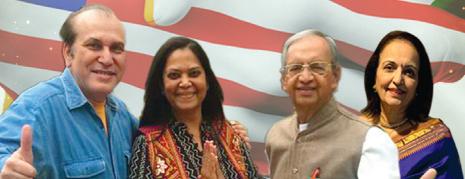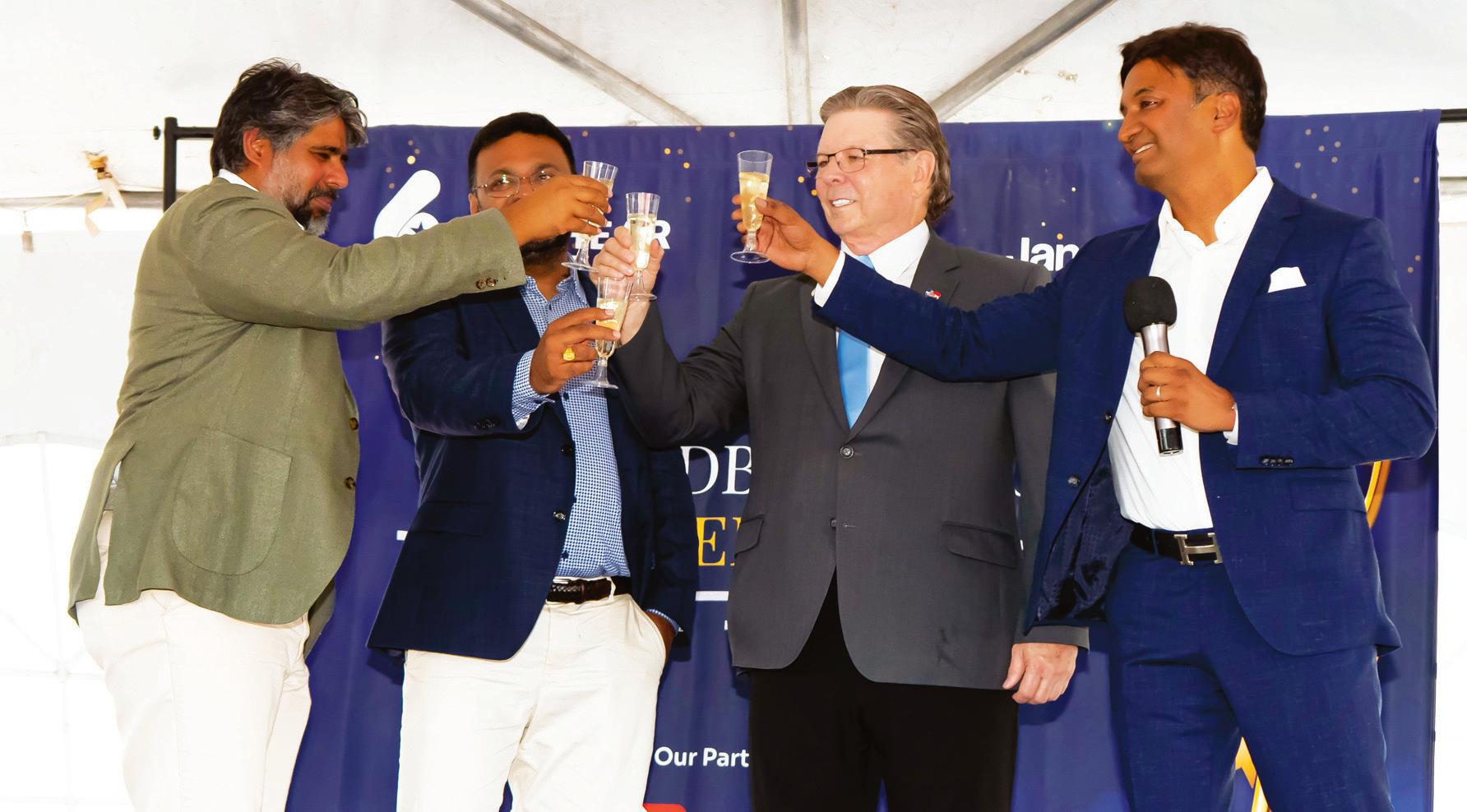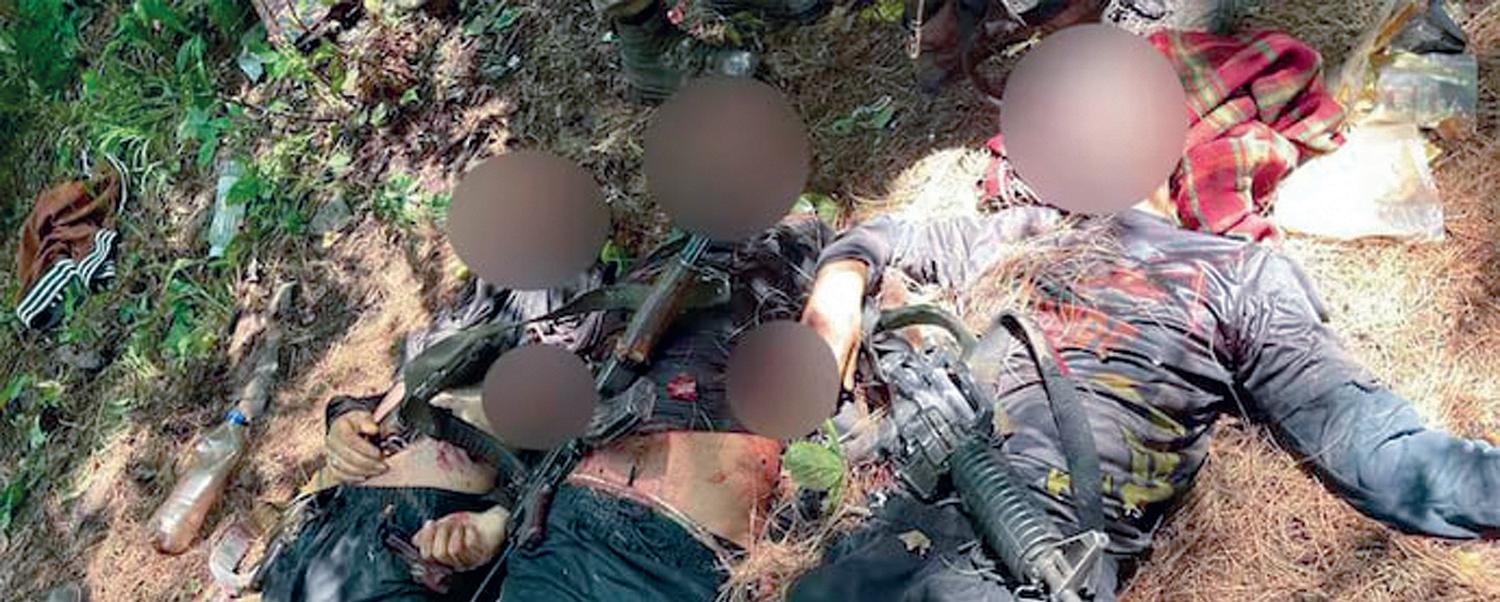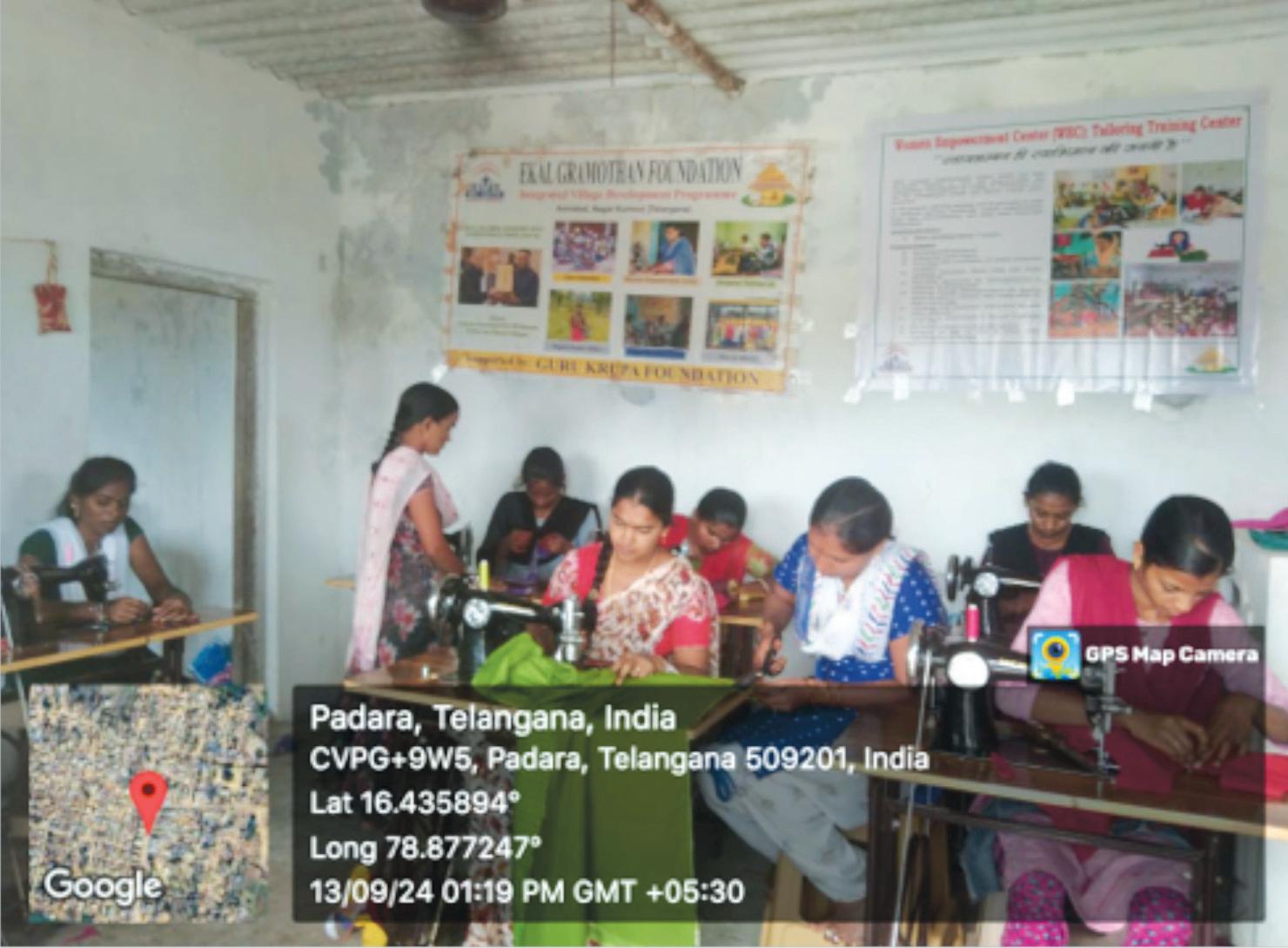






















Fullshear: On Friday, July 25, 2025, Fulshear Central, a 22-acre mixed-use development, officially broke ground with a celebratory event attended by more than 100 guests. Located off FM 1093 in Fulshear, the upscale, state-ofthe-art project offers over 130,000 square feet of development potential, with the first phase set for completion in early 2026.
The event was emceed by Michael Garfield, “The High Tech Texan,” who welcomed guests and guided the program. The Fulshear Central team opened the afternoon with remarks about the project’s vision and the value it brings to the growing region.
Janapriya Upscale CEO Kranti Kiran Reddy spoke about the group’s legacy and future plans, while Satya Guduru, CEO of the U.S. region, and Arvind Cheruku, Chief Information Officer, provided a detailed overview of the development’s layout, goals, and long-term potential.
Several city and county officials also took the stage, highlighting the significance of the moment.
Fulshear Mayor Don McCoy welcomed guests and spoke on the city’s rapid growth and commitment to thoughtful, elevated

development. City Manager Zach Goodlander expressed the city’s pride in the milestone and reflected on the close collaboration between the city and developers that helped bring the vision to life.
the official groundbreaking of the Fullshear Central mixed-use development. provided by Texana Café and Safari Texas. Guests were able to explore the Fulshear Central grounds while commemorating the highly anticipated groundbreaking of Fulshear’s first mixed-use development.
Following the remarks, guests gathered for a ceremonial shovel lineup to commemorate the official groundbreaking. The celebration continued with refreshments
VIP Guests
Arvind Cheruku, Satya Guduru, Kranti Kiran Reddy, Michael Garfield, Mayor Don
McCoy, City Manager Zach Goodlander, Mr. Ravinder Reddy, Founder and Chairman of Janapriya About Fulshear Central Fulshear Central is a mixed-use lifestyle center coming to FM 1093 in Fulshear. Made specifically for local residents, Fulshear Central is set to become the area’s premier destination for upscale retail, dining, and professional office space.
The development will feature modern finishes and thoughtfully designed amenities, including a half-mile walking trail, patioed office space, and open green areas that foster community connection.
For more information, visit https://fulshearcentral.com/. Follow us on Instagram, Facebook, LinkedIn, YouTube
About Janapriya Upscale USA Janapriya Upscale USA is a privately owned real estate firm and the U.S. division of Janapriya, an internationally recognized developer with over 36 years of experience.
The company has built more than 1.5 billion square feet of real estate and delivered over 26,250+ homes worldwide. Its expansion into the U.S. reflects a strong commitment to thoughtful, high-quality development that serves local communities. Janapriya Upscale USA began its work in Houston with the Katy Parkway Market and is now proud to continue its growth with the launch of Fulshear Central.
For more information, visit https://janapriya.us/about.html

Riyaaz Qawaali’s vocalist Sonny Mehta leads the presentation of “The Spirit of Punjab’, a sold-out concert at the Asia Society Texas auditorium. houston: “The Spirit of Punjab” was a soulful Sufi folk journey by Riyaaz Qawaali, a Houston-based music group. The performance unfolded through the layered folk history of Pubjab -- where music has both memory and meaning. At its core, The Spirit of Punjab refuses the surface-level perception of Punjabi music as conveyed through only dhol and bhangra. The selected songs spoke of longing, displacement, resistance, and devotion.
Riyaaz Qawaali has performed qawaalis for 19 years. The musicians, settled in Houston, have
roots from India, Pakistan, Nepal, and Bangladesh, representing multiple religious backgrounds. Trained in eastern and western classical music, they have released two albums and over 35 singles on social media. Sonny K. Mehta, their founder, leads the ensemble as its artistic director.
The show begins with the sadness that shapes a people: heartbreak, abandonment, and the loneliness of migration. From the pain of Heer to the wandering soul of Challa (originally performed by Gurdass Mann), these songs hold space for grief as a generational
language -- at home in both Punjab and Houston.
The show weaved through spiritual traditions -- Sikh, Muslim, and Hindu -- without pausing to draw boundaries. Musical pieces like Yaar Da Deewana (Nooran Sisters), Isq Bulleh Nu Nachave (Kanwar Garewal) are rooted in shared divinity, much like the Houston communities, where temples, mosques, and churches stand side-by-side. Simplicity and poverty are the backdrops for spiritual clarity and poetic richness. Later in the set, the music lifts the voices of women -- unapolegetic
and playful -- through folk traditions such as tappay (Chitra Singh) and songs like Saanja Hai Punjab Saada (Arif Lohar) . In a city
shaped by migration and complexity, this is not just Punjab’s story -- it’s Houston’s too. -- program notes from Asia Society Texas.
houston: The Academic Liaison Committee (ALC) of Federation of Jain Associations in North America (JAINA) has established a new partnership with the University of Texas at Austin (UT-Austin) to establish The Tirthankar Sumatinath Distinguished Professorship in Jain Studies.
This newest of 24 endowed professorships established by the ALC will reside in the UT-Austin’s Department of Asian Studies in the College of Liberal Arts at UT-Austin’s sprawling campus in the capital city of Texas, where the Jain Society of Greater Austin was founded in 1995 by 70 families –today, Austin has a thriving membership of over 250 families, and the UT-Austin is a flagship university of Texas, offering a broad curriculum that draws students from across the state and around the world. Presently, UT-Austin has nearly 55,000 students, mostly from Texas and hailing from Judeo-Christian backgrounds with a significant diversity of Asian students and faculty.
The ALC held a celebratory event on Saturday, July 19 at Jain Vishwa Bharati (JVB) Center in Houston, attended by six UT-Austin faculty members and nearly 100 members of the Jain community, comprised of donors, diplomats, civic officials, Jain nuns and interfaith dignitaries from Houston, Dallas and Austin as well as other parts of the United States. The elegant inauguration event began with a soulful recitation of the Navkar Mahamantra (the core prayer of Jainism) by four Samanijis (nuns) of JVB Houston and JVB Miami centers. JVB Chairman Dr. Swatantra Jain recognized all major donors whose generous gifts totaling $1 million enabled this permanent professorship at UT-Austin which completes the milestone sacred lineage of twenty-four Tirthankaras (or divine spiritual reformers and teachers of Jainism who have guided humanity towards the path to purification and salvation).
Realizing a vision that has been several years in the making, ALC Founder and Past Chairman, Dr. Sulekh C. Jain, (who also co-founded JVB Houston with Swatantra Jain) thanked Professor Donald R. Davis for visiting the Jain Society of Houston (an organization with over 1000 Jain families) nearly ten years ago as part of the early relationship building and for his interest in teaching Jainism, a religion which inspired Mahatma Gandhi, Martin Luther King, Nelson Mandela and many other changemakers to follow the path of non-violence.
Dr. Jain stated there is a growing interest at campuses around the world in teaching Jainism and its timeless values such as Ahimsa (non-violence), Anekantavada (tolerance for multiple perspectives) and Aparigraha (non-possessiveness and sustainable living)



either on a stand-alone basis or in comparative religions classes and degree programs. He recalled that the first endowed professorship in Jain Studies was established at Florida International University in Miami in 2010, and presently, fifty-five (55) universities in thirteen (13) countries around the world offer undergraduate and graduate courses in Jain studies. In 2025 alone, the ALC has established fully funded endowed programs in Jain Studies at Claremont School of Theology, Arihanta Institute (a three-year old online Jain university), University of Arizona at Tucson, and also funded two new PhD research programs and a postdoctoral fellowship at University of Oxford (UK), while negotiations are progressing at a leading institution in Washington DC and two large universities in Japan.
The ALC’s partnership with the Pune (India)-based International School for Jain Studies (ISJS) has trained about 1,200 students and scholars from over 40 universities and 26 countries in Jain studies by hosting visits to India or in online programs. This partnership feeds the pipeline of graduate students, post-doctoral fellows and competent faculty equipped with advanced knowledge in Jainism so that they could address pivotal issues pertinent to humanity and the global Jain community which has five million followers in India and about 300,000 in over 35 nations worldwide. The ALC’s larger vision is to preserve and propagate core Jain teachings while making the world a better place for humanity and the planet.
The new faculty position at UTAustin will report to Professor
thereby meeting the UT-Austin’s mission to spawn leaders who can integrate learnings into real-world scenarios and positively impact their respective organizations and communities. The faculty members collectively thanked all donors for their gifts which will enable knowledge dissemination beyond college students, via the university’s extended outreach to a dozen high schools, junior colleges and the interfaith community.
DC Manjunatha, Honorable Consul-General of India in Houston, congratulated the gathering on this academic initiative at UTAustin, praising the contributions of ancient Jain sages he was influenced by when growing up in his home states of Karnataka and Tamil Nadu. He also cited the recent global celebration of Navkar Mahamantra Divas on April 9, 2025 (for recitation of Jain prayers to foster world peace) with an inspiring call to action by Indian Prime Minister Narendra Modi to follow the teachings of Jainism for sustainable living.
Ms. Tiffany D. Thomas, Houston City Councilwoman for District F, lauded the UT-Austin and Jain community for working together in promoting non-violence, compassion and truth, and presented Swatantra Jain with a certificate of recognition to JVB Houston for upholding these values.
As the lead benefactor for the ALC and major donor for the UTAustin Distinguished Professorship in Jain Studies, philanthropist Dr. Jasvant Modi (President of Vardhaman Charitable Foundation) emphasized that the Jain community has evolved from undertaking temple-building projects as early settlers in the diaspora, to building new knowledge centers for sustaining and propagating Jain teachings to transform humanity. He stated “This ALC collaboration with UT-Austin fulfills our call for action to invest in peace, nurture compassionate global citizens, and shape resilient communities for generations to come.”
Donald R. Davis, Chair of the Religious Studies Department. The department will offer in perpetuity year-round courses and research opportunities incorporating Jain philosophy and principles to train students and scholars in areas of personal and organizational transformation such as non-violence, tolerance, ethics, languages, yoga and wellness, environmentalism, peace studies and sustainable development.
In their remarks, UT-Austin College of Arts Dean David Sosa, Professor Akbar Hyder (from UTAustin’s South-Asia Institute) and Professor Davis emphasized the philanthropic gifts will greatly aid the Distinguished Professorship to utilize multiple learning modes such as academic studies, field visits and seminars in critical inquiry and analysis of Jain principles,
Dr. Manish Mehta, Vice-Chair of the ALC, stated that by studying the ancient Jain philosophy which dates to nearly 5,000 years, modern day students can gain a profound science-based awareness of ethical living and apply it to navigate the balance between development and environmental stewardship while learning to appreciate the interconnectedness of life, as Jainism engenders respect for all living beings.
Mr. Gaurav Jhaveri, President of JVB Houston concluded the celebration with a vote of thanks to all attendees.
Highlights of the JVB Houston’s celebration and excerpts of other presentations may be viewed in this four-minute video:
https://www.youtube.com/ watch?v=UYbZGVbgel0

new Delhi: Union Home Minister Amit Shah on Tuesday informed the Lok Sabha that the three terrorists involved in the April 22 Pahalgam terror attack had been killed in a joint operation by security forces a day earlier.”I want to tell the House and people of the country that those who killed our people in Baisaran Valley (in Pahalgam) ... all three terrorists have been killed,” Shah said during a debate in the Lok Sabha on the Pahalgam attack and subsequent Operation Sindoor.
Details of Operation Mahadev
“In a joint Operation Mahadev, the Indian Army, CRPF, and J&K Police have neutralised three terrorists who were involved in the Pahalgam terror attack,” he said.
Shah also said that the three were Suleman alias Faizal, Afghan, and Jibran. “In the Operation Mahadev, Suleman alias Faizal, Afghan and Jibran, these three terrorists were killed. Suleman was an A-category commander of the Lashkar-e-Taiba. Afghan was an A-category Lashkar-e-Taiba terrorist. And Jibran was also an Agrade terrorist... All three terrorists who killed our citizens in the Baisaran valley in Pahalgam have been eliminated.
He added that security forces had been instructed to ensure that the terrorists responsible for the Pahalgam attack did not escape from the country.Shah also said that the government has proof that Pahalgam terrorists came from Pakistan. “We have proof - two had Pakistani voter IDs, and even the chocolates they carried were made in Pakistan,” he said in Parliament.
How the terrorists were identified
He added that security forces had been instructed to ensure that the terrorists responsible for the Pahalgam attack did not escape from the country.Shah also said
that the government has proof that Pahalgam terrorists came from Pakistan. “We have proof - two had Pakistani voter IDs, and even the chocolates they carried were made in Pakistan,” he said in Parliament.
How the terrorists were identified
Explaining the investigation process, Amit Shah said, “As part of the investigation, the team engaged with family members of the victims, tourists, pony operators, photographers, and local residents. In total, 1,055 individuals were questioned over a span of more than three hours. Based on the inputs gathered, composite sketches were prepared. Subsequently, on June 22, two individuals — Bashir and Parvez — were identified as those who had harboured the terrorists.”He said that people who had supplied food to the terrorists responsible for Pahalgam attack had been detained earlier. “All three terrorists - Suleman, Afghan and Jibran were killed in yesterday’s operation. The people who used to supply food to them were detained earlier.
According to military officials, a dormant Huawei satellite phone that had been illegally smuggled into India was inadvertently activated late last week. The signal was intercepted by units in Delhi and traced to the Lidwas area of the Dachigam wildlife sanctuary. Based on the pinpoint location, the Indian Army’s Chinar Corps, Para Special Forces, CRPF, and Jammu & Kashmir Police launched a joint operation at dawn on Monday.
The encounter took place near the Dachigam area, close to the Mahadev ridge, where the Indian Army and Jammu & Kashmir Police launched a joint operation after tracking suspicious movements for nearly two weeks. The operation began around 11:30 AM and involved elite units from 24 Rash-
According to intelligence sources, Shah was not only the chief conspirator of the April 22 carnage in Pahalgam that left 26 civilians dead but was also linked to the brutal killing of seven workers involved in the construction of the Z-Morh tunnel on the SrinagarSonmarg highway in 2024. The terrorists were caught off guard in a temporary hideout, where they were reportedly resting. This element of surprise allowed the Army to neutralise the group effectively. A cache of weapons was recovered from the site, including 17 grenades, an M4 carbine, and two AK-47 rifles. Security forces had been closely tracking a joint Lashkar-Jaish module in the dense jungles of Dachigam after intercepting suspicious satellite communication earlier this month. The surveillance was aided by inputs from local nomadic communities. Renewed communication signals just two days ago helped pinpoint the terrorists’ location, culminating in Monday’s swift encounter. The name ‘Operation Mahadev’ was reportedly chosen due to the location of the operation between the Mahadev and Zabarwan ridges. The National Investigation Agency (NIA), which is probing the Pahalgam attack, had earlier arrested two locals for allegedly sheltering the attackers. While official confirmation of Suleiman Shah’s role in the Pahalgam massacre is awaited following identification of the bodies, intelligence sources maintain he was the key figure behind the planning and execution. Once the bodies of these terrorists were brought to Srinagar, they were identified by those who were kept detained by our agencies,” Shah said.He added that forensic evidence was used to confirm their identity. “NIA had already arrested those who gave them shelter. Those who fed them were

detained. When the terrorists’ dead bodies reached Srinagar, they were identified as the three people who carried out the terror attack in Pahalgam... The FSL report of the cartridges from the terror attack was already ready... Yesterday, the rifles of the three terrorists were seized and matched with the FSL reports... Further tests were carried out in Chandigarh yesterday, after that it was confirmed that these three were those who carried out the terror attack...” Shah said. Explaining the investigation process, Amit Shah said, “As part of the investigation, the team engaged with family members of the victims, tourists, pony operators, photographers, and local residents. In total, 1,055 individuals were questioned over a span of more than three hours. Based on the inputs gathered, composite sketches were prepared. Subsequently, on June 22, two individuals — Bashir and Parvez — were identified as those who had harboured the terrorists.”He said that people who had supplied food to the terrorists responsible for Pahalgam attack had been detained earlier. “All three terrorists - Suleman, Afghan and Jibran were killed in yesterday’s operation. The people who used to supply food to them were detained earlier. Once the bodies of these terrorists were brought to Srinagar, they were identified by those who were kept detained by our agencies,” Shah said.He added
that forensic evidence was used to confirm their identity. “NIA had already arrested those who gave them shelter. Those who fed them were detained. When the terrorists’ dead bodies reached Srinagar, they were identified as the three people who carried out the terror attack in Pahalgam... The FSL report of the cartridges from the terror attack was already ready... Yesterday, the rifles of the three terrorists were seized and matched with the FSL reports... Further tests were carried out in Chandigarh yesterday, after that it was confirmed that these three were those who carried out the terror attack...” Shah said. The April 22 attack in Baisaran Valley, popularly known as “mini Switzerland”, was one of the deadliest in recent memory. Carried out while tourists were enjoying a picnic, the terrorists selectively targeted men, specifically those identified as non-Muslims. The attack was later claimed by The Resistance Front (TRF), a shadow outfit of Lashkar-e-Taiba. The development comes on the day when the Parliament is set to debate the Pahalgam massacre and India’s military response through Operation Sindoor. Opposition parties have repeatedly criticised the government over delays in bringing the perpetrators to justice. The elimination of Suleiman Shah is being seen as a significant counterterrorism success for Indian security forces.
Moscow: Russia has been compelled to bring in one million Indian workers to avert a complete breakdown of its workforce. Ever since the launch of the comprehensive war in Ukraine in February 2022, countless working-age Russians have been summoned for military service.
The armed forces are facing tremendous strain to locate fresh recruits for deployment to the battlefront as replacements for those who have been killed or wounded. Russia has endured massive personnel casualties throughout more than three-and-a-half years of savage combat.
Based on certain reports, Vladimir Putin’s military has experienced over one million casualties - encompassing both fatalities and injuries. Faced with devastating losses in Ukraine and a surge of departures, Russia is now grappling to secure sufficent workers to maintain its wartime economy. It comes after a terrifying map revealed the US regions where 75% of people will die in a nuclear World War 3.
Russian enterprises will be required to recruit the equivalent of two million employees annually over the coming five years to occupy both newly established roles and openings left by those retir-

ing.
This situation has compelled the Kremlin to search globally for foreign laborers to address shortages in Russian manufacturing facilities. Moscow has discreetly negotiated an agreement with New Delhi to import up to one million Indian workers to help alleviate workforce challenges.
“As far as I know, by the end of the year, one million specialists from India will come to Russia, including the Sverdlovsk region,”
Andrey Besedin informed the RBC media outlet. The leader of the Ural Chamber of Commerce and Industry continued: “A new Consulate General is opening in
Yekaterinburg, which will deal with these issues.”
Besedin noted that the Indians would help address the shortage of highly skilled workers in the Sverdlovsk region.
Situated in the Urals, this region is the heartland of Russian heavy industry and the military-industrial complex, housing globally renowned entities like the Uralmash factory and the T-90 series tank manufacturer, Ural Wagon Zavod. By 2030, Russia’s economy is projected to require 10 million workers, a daunting task considering a dwindling birth rate and an increasing tally of war casualties.
houston: Ramesh Cherivirala from the Houston of New York Life has been listed on the 2025 Forbes Top Financial Security Professionals Best-in-State list.
The individuals named to this list of distinguished professionals were chosen based on many criteria considered by an independent research firm.
A New York Life agent for 24 years, Dr. Cherivirala received this recognition for helping his clients in a world in which wealth preservation and protection matter more than ever.
“We are honored that Ramesh appears on this prestigious list,” said Rob Hodgkiss, managing partner of the Houston General Office. “New York Life has known for quite some time what a valuable asset Ramesh has been to our family and to many families and businesses in our community.”
Ramesh is a Financial Advisor, offering advisory services through Eagle Strategies, LLC, a registered investment advisor. He is a member of Nautilus Group, The Nautilus Group® is a service of New York Life Insurance Company providing dedicated support to approximately 230 qualifying member agents, the company’s top

producers who work primarily in the advanced and high net worth markets. He received a Ph. D degree from Osmania University, Hyderabad, India and LUTC®, and FSCP® designations from American College. He has been a resident of Texas for over 3 decades and currently lives in Sugar Land for the past 24 years, married to Anuradha and has two children Sushain and Spoorthi.

washington Dc: The Donald Trump administration is planning to revamp the H1-B visa lottery system, aiming to replace it with a more weighted and wage-linked selection process.
Accordingly, the US Department of Homeland Security (DHS) said in a filing on July 17, the administration has proposed the introduction of a “weighted selection process” for the capped category of the system. It has already been submitted to the Office of Information and Regulatory Affairs.
The proposed changes aim to give preference to certain applicants based on additional criteria— potentially including wages— thereby benefiting highly-skilled and higher-paid professionals.
The H1-B visa lottery system has been a topic of debate between Trump and his supporters and it has often been critcised as ‘broken’.
Here a look at the new system and how it different from the existing one.
How the candidates are chosen in the current format?
Currently, the system is quite simple! Applicants who are eligible for H1-B visa submit their applications, and a computer-run lottery randomly selects the recipients.
Each year, about 85,000 H-1B visas are issued, including 20,000 reserved for individuals holding a Master’s degree or higher from a U.S. university. However, demand is each passing day.
How the new system will work?
Right now there is no clarity about how the new system will work as DHS has not shared many details publicly yet.
However, a study by the Institute for Progress earlier this year found

that if higher salaries were given priority instead of using a random lottery, the average salary of an H-1B visa holder could rise from around $106,000 to $172,000.
That would make things much harder for outsourcing firms who rely on hiring large numbers of lower-wage workers, but could be a big plus for researchers, PhD holders, and senior-level tech professionals, the report also said.
The US Citizenship and Immigration Services (USCIS) is still finalising the draft of the proposed rule, which will go through a public review process before becoming official. If approved, the new system might go live next year.
Foreign nationals in the US, including Indians holding visas, who are registered with the systems will now have to carry their documents with them all the time and their children will need to reregister and submit their fingerprints as soon as they turn 14, a news US law has said.
FounDer: Dr. K.l. sinDwani
Publisher: Jawahar Malhotra
eDitor: PraMoD KulKarni
corresPonDent: sanchali basu
®All rights reserved. No material herein or portions thereof may be published without the written consent of the publisher. Deadline for advertising and articles is 4 pm on Monday of each week. Please include self-addressed, stamped envelope for return of all unsolicited material. Published at 7457 Harwin Drive, Suite 212, Houston, Texas 77036.Tel:713-789-6397, email: indoamericannews@yahoo.com, website: www.indoamerican-news.com
New US immigration rule
As per the new rule, any immigrant living in the United States has to furnish documents confirming their legal status whenever asked.
The announcement was made on Friday, when the Department of Homeland Security (DHS) notified about the new rule.
“All noncitizens 18 and older must carry this documentation at all times. This administration has directed DHS to prioritise enforcement, there will be no sanctuary for noncompliance,” the DHS said in a statement.
The announcement comes shortly after a US court allowed the Trump administration to go ahead with a plan to make immigrants illegally living in or entering the United States register with the federal government or face fines or imprisonment.
Will Indians be affected?
The new regulations, which have come into effect on April 11,
is poised to have several consequences on immigrants in the US. Indian H-1B visa holders will also be affected by the decision.
According to a Times of India report quoting immigration experts, those who have entered the US using a valid visa (study, work, travel etc.), hold a green card, employment documentation border crossing card or an I-94 admission record will not be affected by the US court verdict and will not
be needed to register themselves again.
However, even in cases of such ‘already registered’ immigrants, including Indians, it is mandatory to carry their registration documents at all times. This includes Indian workers holding H-1B visas or international students, a chunk of whom are Indians.
The children of such people will have to re-register themselves and submit their fingerprint within the first 30 days of turning 14.
As per a Reuters report, District Judge Trevor McFadden in Washington, appointed by President Donald Trump during his first term in office, found that groups challenging the Department of Homeland Security rule implementing the policy - including the Coalition for Humane Immigrant Rights and United Farm Workers of America - had not shown they had standing to bring the lawsuit.
“As organisations, many of their harms are too speculative, and they have failed to show that the Rule will erode their core missions,” he wrote.
Federal law has long required immigrants in the United States, including those in the country illegally, to register, but the requirement has not been imposed upon.


by chetan Dave
washington Dc: The US Congress recently passed the legislation known as the One Big Beautiful Bill Act (OBBB) and signed into law on July 4th. Only some major aspects have been covered by the media but there are a lot of smaller provisions which have not received much attention because the bill was a sprawling 900+ page document. Given how little time was available, hardly any Congressman or Senator has read the entire the document before voting.
Items marked (*) have conditions attached to them.
Key highlights are:
• sonal tax brackets.
No change to current per-
Deduction for state and local
• taxes increased to $40,000 from $10,000 (*)
•
Income from Tips and
Overtime pay up to $25,000 is exempt until 2028 (*)
Interest on loan for vehicles
• assembled in US is tax deductible (Tesla, GM, Ford etc.)

and parents/family can contribute $5,000/yr. Money can be used for higher education and house downpayment etc.
Billion Immigration (ICE) fund- • ing increased by $170 Billion. This is more than FBI, Drug Enforcement Agency and Bureau of Prisons combined.
NASA budget increased by • $10 Billion, $85 million of which will pay for relocating Space Shuttle Liberty to Houston.
Student loan repayment • moratorium is cancelled and repayments will resume. Student loans for graduate • school capped at $20,500/yr ($50,000/yr for medical and law schools) and a lifetime cap of $257,000.
efits and coverage.
Seniors (65 yrs+) will be
• able to deduct $6,000 from their taxable income but Social Security income will remain taxable (*)
$7,500 electric vehicle tax • credit to be ended by September 2025
Verification of eligibility will change from once a year to every six months. Establishes minimum staff- • ing ratios for nursing homes. This may cause many nursing homes to close down.
New tax deferred “Trump
• Accounts” opened for newborn children of US citizens between 2025 and 2028 will receive $1,000 from govt
There are many changes • to Medicaid and SNAP (Supplemental Nutrition Access Program). One major change is a new 80 hr/ month work requirement for people 19 to 64 yrs old.
New 5-year waiting period • for new green card holders before being able to apply for Medicaid Federal funding for SNAP • will be reduced from 75% to 25%. States will have to fill the gap or reduce ben-
Estate tax exemption will be • permanently increased from $6.5 million to $15 million per person. $30 million per married couple. This will benefit wealthy households. 1% tax on all remittances • sent abroad by non-US citizens
Purchases on Temu and • Shein will no longer be exempt from tariffs.
Department of Defense • budget increased by $150
Small business owners will • be able to immediately expense 100% of any purchase of equipment and certain R&D and capital expenses. Overall, OBBB will add • $3.4 Trillion to the national debt over 10 years, the single largest increase to deficit ever and the largest during peacetime. The law also included a $5 Trillion increase to the national debt ceiling.
This Bill consistently polled to be unpopular. Fox News poll before the passage showed 59% opposed and 29% in favor.
Chetan Dave is a frequent expert guest on Indo-American News Radio.

In the heart of India’s most remote villages, where access to education and resources is scarce, a powerful force is at work—Ekal Vidyalaya. Driving this movement is a deep-seated belief in empowerment through literacy and skill development, a mission that has been amplified by the unwavering support of the Guru Krupa Foundation (GKF). Their commitment to uplifting underprivileged communities has not only transformed countless lives but has also reinforced the very essence of Ekal’s vision.
A Partnership Rooted in Compassion and Purpose:
Guru Krupa Foundation, a compassionate force from New York, was built on the simple yet powerful values of helping those in need, spreading knowledge, and keeping cultural roots alive. In Ekal Vidyalaya, they found a perfect partner—a shared dream of bringing education, healthcare and economic prosperity to the most remote villages in India.
Since 2013, GKF has been a guiding light in Ekal’s journey, funding schools, introducing elearning with tablets, and making sure no child is left behind, no matter how far they live. Beyond education, GKF has also supported Integrated Village Development, helping communities grow through better healthcare, livelihood opportunities, and sustainable living.
Mukund Padmanabhan ji, the visionary behind GKF, strongly believes in education as the foundation for breaking the cycle of poverty, stating: “Providing children with quality education is the best way to help them break out of poverty. Primary education provides the basic foundation on which later successes



can be built.” It is this belief that has driven GKF’s extensive contributions to Ekal’s cause.
The Impact of GKF
With the support of Guru Krupa Foundation, the Ekal Integrated Village Development (IVD) program is transforming 30 villages in Amrabad by fostering education, digital literacy, healthcare, and skill training over five years.
A key focus is women’s empowerment, equipping them with tailoring, handicrafts, and mushroom farming skills to achieve financial independence. Farmers are trained in organic farming, pest control, and food preservation, boosting yields and incomes by connecting them to better markets.
The program also brings virtual healthcare consultations to remote villages, promotes homegrown nutrition for food security, and educates communities on sanitation, clean water, and disease prevention, ensuring a healthier, selfsufficient future.
A Future of Empowerment & Opportunity:
Through digital literacy, skill training, and sustainable agriculture, villagers are gaining the tools to shape their own futures. Women are becoming entrepreneurs, farmers are improving their yields, and youth are mastering digital skills—fostering independence and self-reliance in rural Bharat.
This transformation would not be possible without Guru Krupa Foundation’s generosity, which continues to light the path toward a future where every child learns, every woman is empowered, and every family has the chance to prosper.
Learn more about Guru Krupa Foundation at guru-krupa.org








by ronaK Kotecha
Story: When a young woman disappears while traveling from Shimla to Manali, a frantic search begins, pulling the local police into a dangerous chase. But what seems like a straightforward kidnapping quickly spirals into something far more sinister.
Review: Psychological thrillers demand a unique balance of intrigue and tension. Unlike classic whodunits, where the mystery hinges on the culprit’s identity, here the suspense is built around the perpetrator’s next move, their motive, and whether the victim will survive. So Long Valley attempts to deliver on these expectations—and, to an extent, succeeds. Director Man Singh, who not only helms the film but also portrays Inspector Dev while penning its story and dialogues, sets the tone early with a gripping, atmospheric opening. On a rain-soaked evening in Shimla, Moushmi (Alisha Parveen) storms into the local police station to report her sister, Riya (Akanksha Puri), missing after she left for Manali hours ago but never arrived. The narrative gains traction as Inspector Suman Negi (Tridha Choudhury) takes personal charge of the case, determined to crack a mystery that threatens her otherwise quiet jurisdiction. What begins as a missing person’s complaint quickly turns into a high-stakes hunt against time—Riya could be dead or alive, and every passing hour matters. The story is relatively straightforward, and while the pacing is steady, the tension doesn’t peak as often as it should. The suspense builds gradually rather than in sharp bursts, which may feel slow for some viewers. What keeps the engagement alive is Vikram Kochhar’s solid performance as Kuldeep, the temperamental taxi driver whose unpredictability adds much-needed edge to the proceedings. His portrayal strikes a fine balance between menace and vulnerability, ensuring the character remains unsettling without slip-

ping into caricature.One of the film’s biggest strengths lies in its setting. The cold, mist-laden hills of Himachal Pradesh serve as both a visual treat and an eerie canvas for the dark tale. Srikant Pattnaik’s cinematography captures this contrast beautifully—the pristine landscapes juxtaposed with the lurking sense of dread work perfectly to amplify the mood.However, the film is not without flaws. The overall production feels restricted to a modest scale, with limited characters and locations, making it resemble a chamber drama at times. More distracting, though, is the overbearing background score, which often feels unnecessarily loud and intrusive. Thrillers thrive on subtlety, and the constant need to hammer tension through blaring sound cues undermines
moments that could have been naturally chilling. At just over two hours, the film maintains a crisp runtime, and the absence of songs avoids unnecessary distractions. Performance-wise, the cast does a commendable job. Tridha Choudhury lends grit to her cop role, Akanksha Puri portrays vulnerability convincingly, and Alisha Parveen fits well as the anxious younger sister. Together, they anchor the narrative with authenticity.Just when you begin to think you’ve figured it all out, the film pulls out a twist in its final act— an unexpected turn that redeems its otherwise linear trajectory. This surprise element, coupled with the strong central performances and stunning visuals, makes So Long Valley a watchable addition to the genre.-- ToI


Place a number in the empty boxes in such a way that each row across, each column down and each 9-box square contains all of the numbers from one to nine.
Send us the correct answer before August 4, 2025. Email us at indoamericannews@yahoo.com. Please send us your solved Sudoku for your name to be published.



